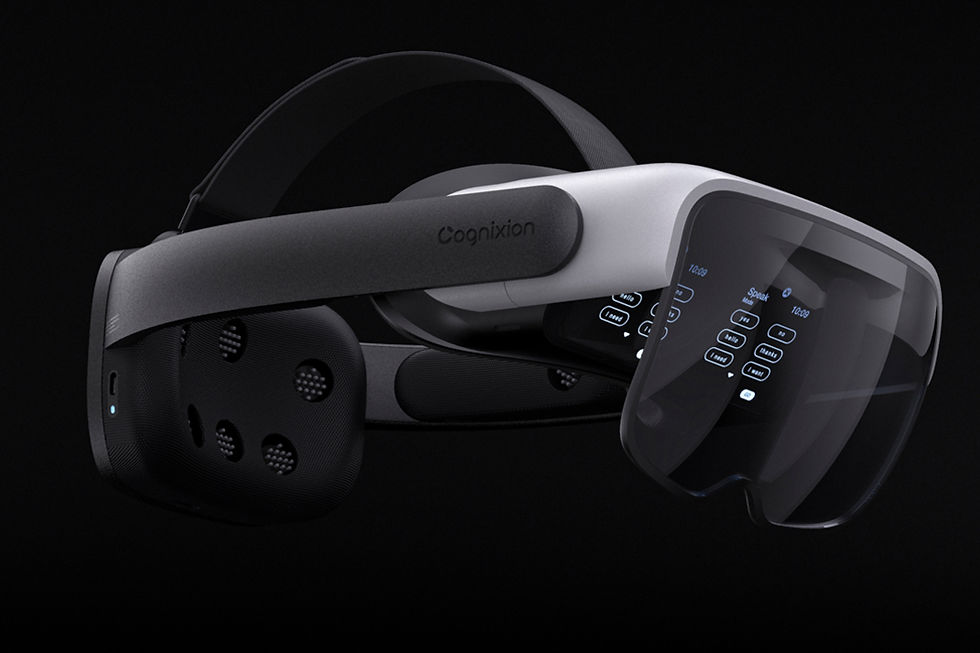COGNIXION ONE- NON INVASIVE AUGMENTED REALITY BRAIN COMPUTER INTERFACE
- Eddie Avil
- May 11, 2021
- 2 min read
Cognixion is a #neurotech #AI company building a commercially viable biosignal recognition system that moves neuroscience from the lab to market. The new #artificialintelligence powered signal processing platform translates brainwave signals via a BCI into #augmentedreality controls.
Cognixion is located in Toronto and California, and builds technology solutions that elegantly blend the power of artificial intelligence (A.I.), neuroscience (BCI) and augmented reality (AR). Cognixion is internationally recognized for its innovation and use of exponential technologies to solve a social and healthcare global challenge - affecting the lives of 509 million people unable to speak.

Cognixion has won the prestigious Roddenberry Prize, the Gold Edison Award for Social Impact, and the Singularity University Global Grand Challenge for Education for its potential to impact over a billion lives
Cognixion is a mobile-connected AR headset with EEG sensors that reads brain signals so that the user can select some choices it has in front of him. This way even if the user has some neural problems and can't speak or move, he/she can communicate with the people around him/her thanks to an audio synthesizer that pronounces the words written by the user.
The headset features a new technology that doesn't just read the brainwaves in a standard way, but sends electrical signals inside the brain and analyzes how they return to the sensor, for a sort of echolocation that improves the accuracy of the read information.
Apart from this new technology, the company is also working on carefully designing the UI in front of the user, so that it's easier to interact with it just by the use of brain signals: so for instance the most common answers feature big buttons and are easier to select.
Thanks to all these improvements, the headset can help people with diseases like cerebral palsy to talk more easily with the people around them than they could do with the traditional bulky eye-tracking devices.


Comments